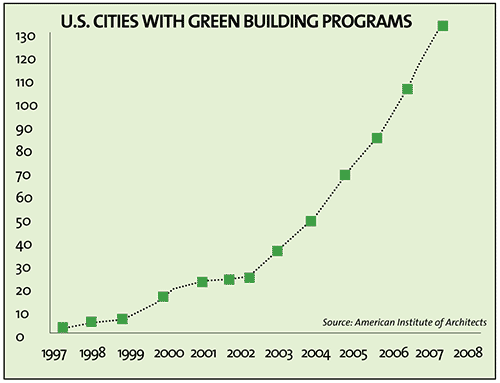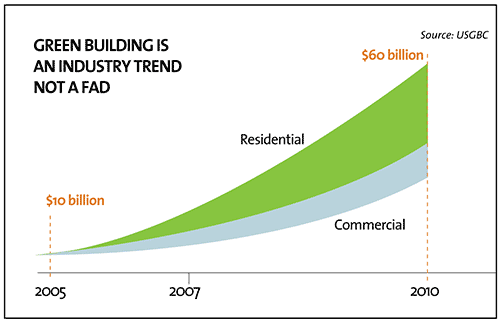The Case for Certified Wood
Programme for the Endorsement of Forestry Certification (PEFC)
The Programme for the Endorsement of Forest Certification
schemes (PEFC) is an international, independent, non-profit,
non-governmental organization founded in 1999, that promotes
sustainably managed forests through independent third party
certification. Since its launch, PEFC has become the largest forest
certification umbrella organization; it covers national systems
from all over the world, delivering hundreds of millions of tons
of wood to the processing industry and then onto the marketplace.
Currently, more than 494 million acres are certified forests - an
area larger than the combined forest area of all European Union
member states. At this size and growing rapidly, it is by far the
largest global program for certifying sustainable forests. Canada,
the United States, Norway, Finland, Spain, Brazil, the Malaysian
Republic, and many other European countries are among those
with PEFC-approved forest certification systems. PEFC has strong
grass roots support from many stakeholders including the forestry
sector, governments, trade associations, trade unions and nongovernmental
organizations.
American Tree Farm System (ATFS)
The forests of the United States are very diverse in composition and
range from the oak-hickory and maple-beech-birch forests of the
North to the South's pine forests and the Douglas-fir and ponderosa
pine forests of the West. While many consider the vast majority of
forest land to be in government or corporate ownership, the fact is
that 60 percent of all the wood harvested in the U.S. actually comes
from family forestlands. Ownership patterns of forest land vary:
public ownership is predominant in the West; private forestland
predominates in the East.
The American Tree Farm System (ATFS) was first launched in 1941 as an initiative to address concerns that America's privately-held forests were being cut at unsustainable rates without reforestation. It now represents more than 90,000 family forest owners in 45 states, most of whom manage woodlots of less than 100 acres. ATFS is the largest private forest conservation and forest restoration initiative in the history of the United States, with the number of certified family forests landowners in the system doubling over the past four years. A national program of the Center for Family Forestry, ATFS promotes the sustainable management of forests primarily through education and outreach to private forest landowners. ATFS private forest landowners manage their forestlands for wood, water, wildlife, and recreation with assistance from 4,400 volunteer foresters.
In August 2008, Geneva-based PEFC endorsed the American Tree Farm System after a 14-month review intended to assure purchasers that certified wood and paper products are produced from sustainably-managed forests. The endorsement will open up the rapidly growing marketplace of green manufacturers, distributors, retailers and consumers to the ATFS family forest owners, qualifying them for access to the international markets that they never had before. Family forestlands are losing 1.5 million acres per year to development annually. These new markets will help small landowners achieve some economic return on their property - essential incentive to avoid development pressures.
Canadian Standards Association
A leading developer of standards and codes, the Canadian
Standards Association is a not-for-profit, membership-based
association serving industry, government, consumers and other
interested parties in Canada and the global marketplace. In terms
of forest certification, CSA worked with diverse stakeholders
to develop Canada's National Standard for Sustainable Forest
Management to formulate a voluntary standard that links adaptive
forest management to forest certification through performance
requirements, public participation requirements and system
requirements. The organization has certified some 60 percent of the
country's forests.

Certified Wood and Green Building
Green building is here to stay. Statistics show a tremendous surge in green construction - from $10 billion to $60 billion in just five years - and a steep rise in the cities with green building programs. With the increase in green building has come a proliferation of a green rating systems geared to awarding points for aspects of sustainable design. All are intended to promote buildings that are better for the environment, healthier for occupants and more cost-efficient to operate, though approach and requirements differ, particularly when it comes to defining certified wood.
Leadership in Energy and Environmental Design (LEED )
Developed by the U.S. Green Building Council (USGBC), the Leadership in Energy and Environmental Design (LEED) is the dominant rating system in the United States and is being adapted for use in other countries. There are several versions of the LEED rating systems tailored to various types of projects. Rating systems for residential and commercial projects are briefly addressed below. LEED-H, or LEED for Homes, is a rating system that promotes sustainable design and construction of high-performance green homes. Focused on the top 25 percent of the most environmentally conscious builders in America, the system has rigorous requirements and stringent standards of proof of compliance with those requirements. Evaluation of homes is made in the following areas: location and linkages, sustainable sites, water efficiency, energy and atmosphere, materials and resources, indoor environmental air quality, and awareness and education. Points are also given for innovation and the design process.

LEED-NC, LEED for New Construction and Major Renovations, evaluates projects in many of the same categories with the exception of location and linkages and awareness and education. A possible 69 points can be achieved; the lowest level, "certified" requires between 26 and 32 points, while the highest status, platinum, requires 52-69 points.









